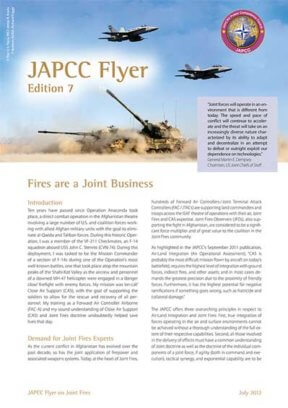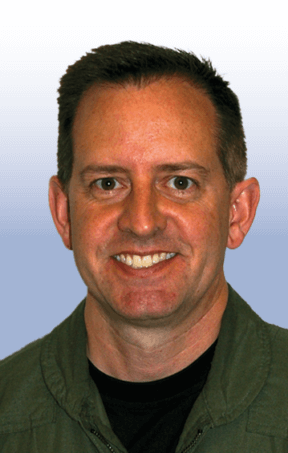Introduction
Ten years have passed since Operation Anaconda took place, a direct combat operation in the Afghanistan theatre involving a large number of U.S. and coalition forces working with allied Afghan military units with the goal to eliminate al-Qaeda and Taliban forces. During this historic Operation, I was a member of the VF-211 Checkmates, an F-14 squadron aboard USS John C. Stennis (CVN-74). During this deployment, I was tasked to be the Mission Commander of a section of F-14s during one of the Operation’s most well-known battles, one that took place atop the mountain peaks of the Shahi-Kot Valley as the aircrew and personnel of a downed MH-47 helicopter were engaged in a ‘danger close’ firefight with enemy forces. My mission was ‘on-call’ Close Air Support (CAS), with the goal of supporting the soldiers to allow for the rescue and recovery of all personnel. My training as a Forward Air Controller Airborne (FAC-A) and my sound understanding of Close Air Support (CAS) and Joint Fires doctrine undoubtedly helped save lives that day.
Demand for Joint Fires Experts
As the current conflict in Afghanistan has evolved over the past decade, so has the joint application of firepower and associated weapons systems. Today, at the heart of Joint Fires, hundreds of Forward Air Controllers / Joint Terminal Attack Controllers (FAC / JTACs) are supporting land commanders and troops across the ISAF theatre of operations with their air, Joint Fires and CAS expertise. Joint Fires Observers (JFOs), also supporting the fight in Afghanistan, are considered to be a significant force multiplier and of great value to the coalition in the Joint Fires community.
As highlighted in the JAPCC’s September 2011 publication, Air-Land Integration (An Operational Assessment), “CAS is probably the most difficult mission flown by aircraft on today’s battlefield, requires the highest level of integration with ground forces, indirect fires, and other assets; and in most cases demands the greatest precision due to the proximity of friendly forces. Furthermore, it has the highest potential for negative ramifications if something goes wrong, such as fratricide and collateral damage.”
The JAPCC offers three overarching principles in respect to Air-Land Integration and Joint Fires: First, true integration of forces operating in the air and surface environments cannot be achieved without a thorough understanding of the full extent of their respective capabilities. Second, all those involved in the delivery of effects must have a common understanding of Joint doctrine as well as the doctrine of the individual components of a joint force, if agility (both in command and execution), tactical synergy, and exponential capability are to be achieved. Such understanding can only be gained via an appropriate Education and Training (E&T) process. Recommended reference documents:
NATO
- ATP 3.3.2.1 (C) CAS TTPs, 17 Feb 2011.
- STANAG 3797 Ed.4, 27 Apr 2009; STANAG 3797 Ed.5 will be released as ATP-80.
- Bi-SC 75-8 Directive, 14 Jun 2010.
- NATO FAC Standardisation Team SOP, 15 Sep 2010.
USA
- Joint Pub. 3.09.3 Close Air Support, 08 Jul 2009.
- JCAS AP MOA 2004-01 – JTAC (Ground), 01 Jan 2012.
- JFIRE, 2007. (Air Land Sea Application Centre is finalising 2012 edition)
Third, inter-Component coordination and liaison at every level, conducted by highly qualified personnel, is essential. Liaison Officers must represent as fully as possible the interests of their Component, and must also be capable of advising leadership to mitigate any shortcomings in Command and Control structures.
Of note, while several countries are pursuing different courses on JFO training and qualification, a unified NATO effort to evaluate and synchronise current FAC / JTAC and JFO training options, amalgamating them into a NATO course that will provide NATO with qualified individuals at the platoon level, is essential.
Goals and Challenges
The Forward Air Controllers Capability Section (FCS) operating at HQ Allied Air Command in Ramstein, Germany, continues to be the lead agent for FAC / JTAC standardisation and CAS / FAC doctrine while addressing numerous Air-Land Integration issues, identified through the Alliance’s experience in ISAF. The FCS highlights three future challenges that must be addressed to maintain credibility and proficiency:
1. Existence: Forward Air Controllers are tactical elements on the battlefield; however a key mistake or misjudgement can lead to dramatically negative strategic consequences. Military and political leadership should sustain their national FAC capability independently from current theatre operations due to the required time to train and the vital role FAC / JTACs play in Air-Land Integration.
2. Standards: Standardisation of FAC / JTAC training and employment is the key to success in all military operations where Air-to-Ground missions are performed. In fact, only a robust FAC standardisation program can guarantee that NATO FAC training requirements are met, and therefore ensure the provision of capable personnel to our operational commanders.
3. Sustainability: In the context of diminishing financial budgets, NATO Nations should strengthen their cooperation in order to optimise all kinds of resources and to bridge the technology and communication gap, eventually sharing exercises, air sorties, ranges, etc., to sustain FAC / JTAC certification / qualification and currency training.
Conclusion
The probable reduction of defence spending over the next decade will undoubtedly affect force structures, emerging weapons systems and combat readiness. Efficient and effective integration of Joint and Coalition fires offers an opportunity to achieve the greatest effect and minimise risk. It is critical that leaders build upon existing relationships to strengthen credible and interoperable partnerships while maintaining the resident knowledge and core competencies the alliance has acquired over the last decade.












